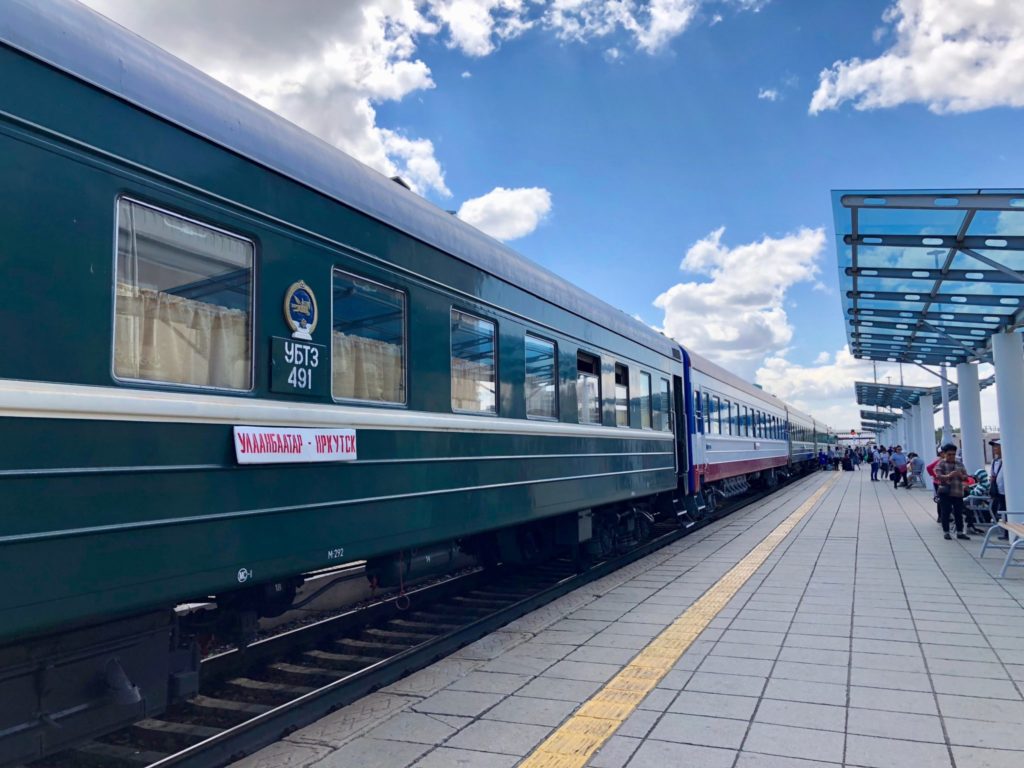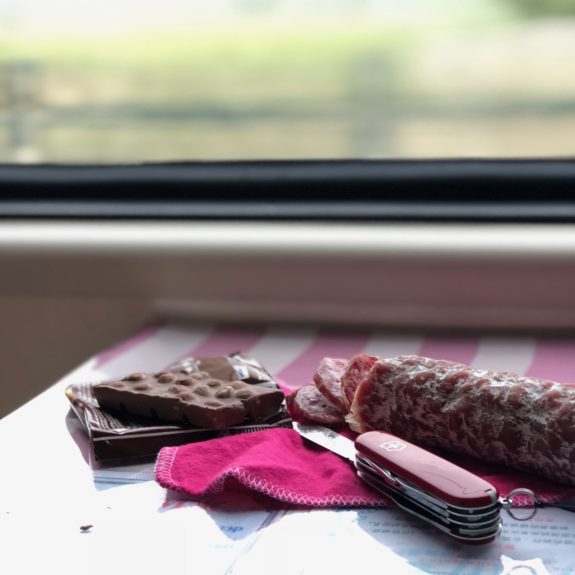Several months ago, itching for an adventure, I had this idea that we should return to France this summer on the train. After watching/reading YouTube Vlogger, Kara & Nate’s detailed documentation of their own Trans-Siberian journey, the idea was firmly rooted.
This grand voyage, consists of 12 different train rides from Shanghai to Strasbourg, became our goodbye tour as we bid farewell to our life in Shanghai.
We needed to be in France by the end of July, and our visas allowed us to stay in China until the end of June. This left us with an one month time frame to complete this trip.
Determine the Stops
The first part of planning was deciding where we want to stop. A quick search online returns a plethora of possibilities. We decided to take the Trans-Mongolian route and have our first stop after Beijing in Ulaanbaatar.
From there, we knew we wanted to stop in Irkutsk to check out Lake Baikal, then towards the European side, Kazan, St. Petersburg, and Moscow. We didn’t want to be in the train for much longer than 48 hours, so for the journey between Irkutsk and Kazan, we took a stop in Yekaterinburg.
From Russia back to France, we had to creatively map the route through Ukraine in order to avoid Belarus, where the visa would’ve been too difficult to obtain from China. With the help of Rome2Rio, and lots of Google searches, we decided to go through Kyiv, Warsaw, Berlin, and finally reaching Strasbourg.

Plan & Book Train Tickets
Unfortunately, this journey is not a hop-on, hop-off deal. With each stop comes a separate ticket and lodging. In total, I booked 12 train tickets and 11 lodging options.
To keep everything organised, I discovered Travefy, a drag-and-drop itinerary planner that allows me to input all the information and have at-a-glance view. Prior to this trip, I just used Excel files to plan, but this trip required something a bit more.
Prior to booking anything, I mapped out our entire trip on Travefy, so I can triple-check that all the dates are absolutely correct. Any one missed step would have domino effect on the rest of the trip.
Below is where and how I planned and booked each leg of the trip:
Shanghai to Beijing: bought tickets on Ctrip.com two weeks prior (that’s when train tickets are released in China), and picked up the tickets at the station. The trains between the two cities are really frequent, so I didn’t worry much.
Beijing to Ulaanbatar: I reserved tickets with Travel China Guide. They collect a small fee, but could provide a confirmation, which was useful when applying for Mongolia visa. Once the ticket is purchased, they will send the tickets to you. The K23 train only runs once a week, so our journey had to be mapped to start with this leg.
Ulaanbaatar to Irkutsk: For tickets in and out of Russia, I booked with Real Russia. The fees are quite a bit higher than when you book by yourself with Russian Railway, but the agency can provide visa invitation letter, and also reservation confirmation letter well in advance for visa purposes.
Once arrived in Ulaanbaatar, we needed to go pick up the physical ticket at Solid Ways Travel Agency, a local partner for Real Russia. The location is difficult to find. But just follow Google Maps, and you’ll see the hidden building in a neighbourhood behind the State Hospital.
Irkutsk – Yekaterinburg – Kazan – St.Petersburg – Moscow: I used Real Russia’s itinerary planner for tickets within Russia, then book it on the official Russian Railway website. Not all the trains have first class, and not all trains run everyday. I wanted us to have private comfort for the 48hr ride between Irkutsk and Yekaterinburg, so I added in an extra day in order to catch the Rossija train.
Tickets only become available 60 days before travel. The English site for Russian Railway isn’t the most straight forward, but with some patience, I was able to manage. A note on the payment: I had Apple Pay set up, and it was a breeze! The tickets for within Russian travel have e-tickets available.
Moscow to Kyiv: Planned & booked with Real Russia. A digital voucher was provided that we will need to exchange for physical ticket at the station.
Kyiv to Warsaw: Planned and booked with Polrail, they are also a ticket agent, and I requested to have the tickets sent to our hotel in Kyiv.
Warsaw to Berlin: Planned and booked on Bahn.de, but for this leg, a physical ticket is also needed. Again, I requested for tickets to be sent to Kyiv. (Side note: I redeemed Starwood points for Mirrors 11 Design Hotel in Kyiv, and I knew the service would be top notch and able to receive tickets for us. A place to send the tickets was an important decision point on where we’d stay.)
Berlin to Strasbourg: This short ride turns out to be one of the more expensive trips. Thanks, TGV… The process is easy enough – booked on Bahn.de again, and it has electronic tickets.
Lodging
Half way through planning back in March, I realised we would be traveling through right at the end of World Cup, which unfortunately meant increased costs for lodging! Fortunately we have family in Moscow, and for the rest of stops in Russia, we went for budget options.
I booked most of our lodgings via Bookings.com, since they often have free cancellation flexibilities. In St. Petersburg and Warsaw, we are staying at AirBnBs. Once reaching Europe, I cashed in hotel reward points in Kyiv and Berlin to reward ourselves after the long journey!
Cost
For most of the train journeys, we opted for second class. I splurged on first class for the two journeys that stretched beyond 24 hours (Beijing – Ulaanbaatar & Irkutsk – Yekaterinburg). The overnight trains offset lodging cost that is a mix of hostels, AirBnBs and hotels.
The total cost for train tickets were $1489 per person, and $400 per person for lodging. This comes to $70 per day for 27 days of travel. You can definitely do this trip much cheaper or go much more luxe, but this is the price point that made sense for us.
Due to our time constraints, we are on the move a lot. As with any travel, the longer you stay in one place, the cheaper it becomes per day. The same applies for trains, the more stops you make, the higher the cost.
Packing
Since we were packing up our lives to travel, we have more stuff than if we were purely just going on this journey. We had seen other travellers who had taken the journey drinking very sad coffee and eating ramen for days, so we prioritised food. True to Xav’s French ways, we stocked up on dry sausages, cheese, break, chocolate, and dry fruit. We only carry what we would eat in on journey, everywhere in the world has markets and grocery stores, so no need to stock up for 30 days!
I recommend packing a small kit for toiletries, chargers, entertainment, and anything you’d need on the journey for easy access. This way you avoid the need to open up all of your stuff to find that one hair pin! We brought a power strip that has proven to be mega useful not just to us, but also fellow travellers on the train. A portable bluetooth speaker is something I always travel with; it provides some ambiance when you get the cabin to yourselves. Finally, dress comfortably. Since we are traveling in the summer season, I always have shorts and tank-top packed in the bag to change into. Cabins tend to get pretty stuffy and hot!
Bon Voyage
Hopefully this is helpful to you! Please let me know if there are other aspects of the trip that you’d like to know. I’d be more than happy to share!

This blog was posted with permission from Wendy Lee. To view more blogs from Wendy, click here.





